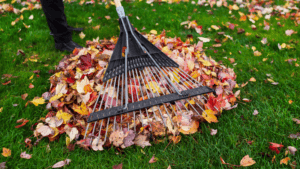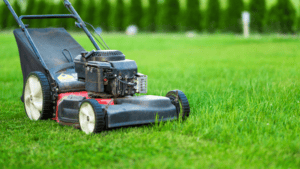As the vibrant hues of autumn emerge, it’s time to shift our focus from the lively growth of summer to preparing our lawn equipment for the impending winter dormancy. Fall preventative maintenance is crucial for preserving the performance and longevity of your tools. In this blog, we’ll explore essential tips to ensure your lawn equipment stays in top shape throughout the colder months.
Clean Thoroughly:
- Before tucking away your lawn equipment, give it a thorough cleaning. Remove grass clippings, dirt, and debris from lawnmower blades, undercarriage, and any other accessible parts. A clean machine is less prone to corrosion and ensures optimal functioning when it’s time to use it again.
Sharpen Blades:
- Dull blades can tear grass rather than cleanly cutting it, leading to a less healthy lawn. Take the time to sharpen the blades of your lawnmower using a file or a professional blade sharpener. Sharp blades make for cleaner cuts, promoting lawn health and reducing stress on the mower’s engine.
Inspect and Replace Air Filters:
- A clean air filter is essential for the proper functioning of your lawnmower. Remove and inspect the air filter, replacing it if it’s dirty or showing signs of wear. A new filter ensures efficient air intake, preventing engine strain and improving overall performance.
Change the Oil:
- Regular oil changes are crucial for maintaining a healthy engine. Consult your equipment’s manual for instructions on changing the oil, and be sure to use the recommended oil type. Fresh oil provides better lubrication and helps prevent corrosion during the dormant season.
Check Spark Plugs:
- Inspect the spark plug for signs of wear, such as fouling or corrosion. Cleaning or replacing the spark plug, if necessary, ensures efficient ignition and smooth engine performance. A well-maintained spark plug contributes to fuel efficiency.
Stabilize Fuel or Drain the Tank:
- Stale fuel can cause starting issues and damage to your lawn equipment’s engine. Consider adding a fuel stabilizer to the gas tank to prevent the fuel from degrading during storage. Alternatively, drain the tank and run the engine until it’s out of fuel.
Inspect Belts and Cables:
- Check the belts and cables on your lawn equipment for signs of wear or damage. Replace any belts that are frayed or showing significant wear, and lubricate cables to ensure smooth operation. Well-maintained belts and cables contribute to the longevity of your equipment.
Store in a Dry Location:
- Moisture is a common culprit for rust and corrosion. Store your lawn equipment in a dry location, such as a garage or shed, to protect it from the elements. If storing outdoors, use a weather-resistant cover to shield your equipment from rain and snow.
Remove and Store the Battery:
- If your lawn equipment, such as a trimmer or leaf blower, has a battery, remove it for the winter. Store the battery in a cool, dry place and consider charging it periodically to maintain its health. Extreme temperatures can affect battery life, so avoid leaving it in freezing conditions.
Consult the Owner’s Manual:
- Your lawn equipment’s owner’s manual is a valuable resource for maintenance guidelines and specific instructions. Take the time to review the manual for any model-specific recommendations and follow them to ensure comprehensive fall preventative maintenance.
Fall preventative maintenance is a proactive approach to safeguarding your lawn equipment and ensuring a smooth start to the spring season. By investing time in cleaning, sharpening, and inspecting key components, you’re not only preserving the functionality of your tools but also extending their lifespan. A little care now goes a long way in maintaining a lush, well-manicured lawn year after year. Happy fall maintenance!



